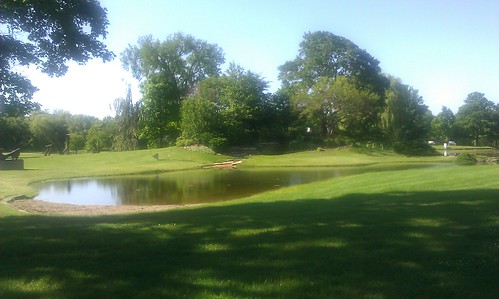An Elephant Sneezed into Our Little Lake…Or, Why Is the Little Lake Dry? pt. 1
Several people have asked us if we drained the pond for the Eiko & Koma performance. We did not. We drained as part of a pond remediation project designed by Christine Kozik, our aquatic biologist in residence, and Eiko & Koma chose it as a performance area. In this and subsequent posts, Christine will tell us something about the biology of algae, her plans for the pond, and how you can participate. Be sure to stop by Lynden periodically to watch the project progress and feel free to come with questions for Christine.
I. Algae 101
Some visitors may have noticed that Little Lake by the front house has been producing an abundance of algae over the years. This green alga, Mougeotia, is affectionately called “elephant’s snot” by limnologists and is a typical problem alga in small, shallow, eutrophic (rich in minerals and nutrients) ponds and lakes. When nutrient levels in the water are greater than those in the pond sediment, algae will outcompete aquatic plants because they absorb nutrients through all cells in a colony, while plants can only absorb through their roots.
Nutrients like phosphorous and nitrogen enter a water system via surface run-off that carries fertilizers applied to lawns, and organic debris such as goose droppings, leaves and grass clippings. Although we have been eliminating chemical treatment of the lawns at Lynden over the past three years, removing these nutrients from a lake system often becomes difficult once introduced, and nutrients may accumulate in the water as well as the sediments. Moreover, the shallow nature of the pond allows sunlight to penetrate to the sediments where Mougeotia is normally found, enhancing the productivity of the algae. When production is very high or when Mougeotia begins to senesce, mats of the algae rise to the surface of the pond and we observe a bloom.

